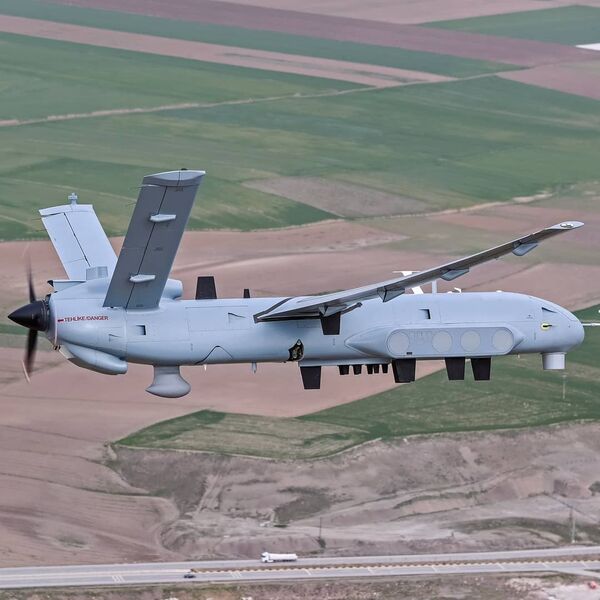The deployment of precision missiles like the Hellfire R9X, the so-called ‘ninja bomb’ which features no explosives, but is packed with half-a-dozen razor-sharp blades designed to chop the enemy to pieces, is likely to cause a further increase in drone strikes, says Air Marshal (ret.) Greg Bagwell, a former Royal Air Force deputy commander.
“The less lethal the weapon the smaller the area that is exposed to danger, even if the weapon fails to guide properly,” he said, speaking to The Telegraph. “As you shrink that envelope there is the temptation to take shots in a situation you would not have been able to with a more lethal weapon.”
Bagwell’s comments came in the wake of last week’s reports on the killing of two commanders of Horas al-Din, an al-Qaeda linked group operating in a militant-occupied area of northwest Syria.
A US strike kills a notable al-Qaeda leader in Syria. A video of the car he was in. pic.twitter.com/5qtVukN5O1 modern weapons!
— Hassan Hassan (@hxhassan) June 14, 2020
Chris Cole, director of Drone Wars UK, a UK-based NGO seeking to ban the use of armed drones, echoed Bagwell’s concerns, suggesting new weapons like the R9X increase the propensity of politicians and commanders to use them.
“This is often just a short term fix as politicians aren’t around for very long and any long term solutions, like other political or diplomatic solutions, often take many years, so they tend to opt for short term solutions,” Cole noted, adding that through drone strikes, leaders are “transferring the risk of combat from our boys to the civilians in the areas where conflict is taking place, and I think that does lower the threshold.”
Furthermore, the observer warned, militaries using so-called ‘precision’ drone strikes have been known to play up successful attacks while playing down unsuccessful ones. “We never see the images of near misses or complete misses. That feeds the Hollywood idea of air warfare where every missile hits its target 100 percent of the time.” This, Cole says, is just plain wrong. “There have been plenty of times individuals have been reported as struck, but they turn up alive, and there have been several reports of people walking away from these strikes because they haven’t been as accurate as they can be.”
According to Cole, the notion of ‘precision’ drone strikes actually only opens up areas, such as cities or towns, to potential attack.
“There’s a real possibility that these new munitions would see the further expansion of drone targeted killing, perhaps completely letting it off the leash,” the observer warned. “It’s a further normalization of the idea of extra judicial, or targeted, killing.”
Cole added that drone strikes erode traditionally defined geographic boundaries of armed conflict and national sovereignty.
It is believed, for example, that the US used a modified R9X missile in the January 4 attack which killed Iranian Revolutionary Guards commander Qasem Soleimani in Baghdad.
Soleimani’s killing “was a big step change,” according to Cole. “And if this further enables the expansion of targeted killing it is extremely worrying. We’ve seen over the last couple of years other states begin to copy the US,” he noted, pointing to a UAE drone strike against a Houthi leader in Yemen, and Turkey’s use of drones in Syria and Iraq. “This idea that you take out individuals without judicial oversight in far off battlefields is expanding rapidly,” he said.
Over the past two decades, the United States military has carried out thousands of drone strikes on targets across the Middle East, West Asia and Africa, hitting suspected terrorist targets in Afghanistan, Pakistan, Iraq, Syria, Somalia and Yemen. The numbers on civilian casualties from such attacks are hard to come by. However, according to the New America Foundation, in strikes carried out between 2004 and 2011, as many as 20 percent of the estimated 2,551 people killed were civilians or unknown persons.




